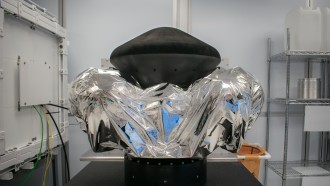Dark matter is known to make up most mass of the universe but much of it is unknown.
In a new study, researchers reported a new method to study the nature of dark matter, which may help unveil its mysteries.
Dwarf Galaxies And Dark Matter
The smallest of dwarf galaxies known as ultra-faint dwarfs host relatively few stars but these tiny galaxies are composed almost completely of dark matter.
Mapping out the dark matter distribution in these galaxies may give new information about the nature of dark matter. Unfortunately, these galaxies do not have gas and contain very few stars, making it difficult to measure the amount of dark matter at their center.
A team of researchers, however, came up with a new means to calculate the density of dark matters that lie within these dwarf galaxies regardless that the host galaxies are devoid of gas and have very few stars. The crucial element to this method is the use of dense star clusters that orbit close to the galactic center.
Star Clusters Orbiting Inside Galaxies
Star clusters are a collection of gravitationally-bound stars orbiting inside galaxies. The density of star clusters causes their stars to gravitationally scatter from one another, which makes them expand. The expansion rate is partly due to how dark matter is distributed in the host galaxy.
Computer simulations showed that the structure of star clusters is sensitive to the distribution of dark matter, whether smoothly distributed or densely packed, at the center of galaxies. Comparing the distribution of dark matter in galaxies can help test or rule out different dark matter candidates.
"We have presented a new method for probing the central DM density in dwarf galaxies using star clusters. Low-mass star clusters orbiting in the tidal field of a larger host galaxy are expected to reach an equilibrium size due to relaxation-driven expansion and the tidal pruning of high-energy escaper stars," researchers wrote in their study, which was published in the Monthly Notices of the Royal Astronomical Society.
Dwarf Galaxy Eridanus II
The researchers used this method to study the dwarf galaxy Eridanus II and found it contains much less dark matter at its center that would otherwise be predicted by other models.
Study researcher Filippo Contenta, from the University of Surrey, said that a similar result involving a larger sample of galaxies would have extensive implications in unveiling the nature of the elusive dark matter.








